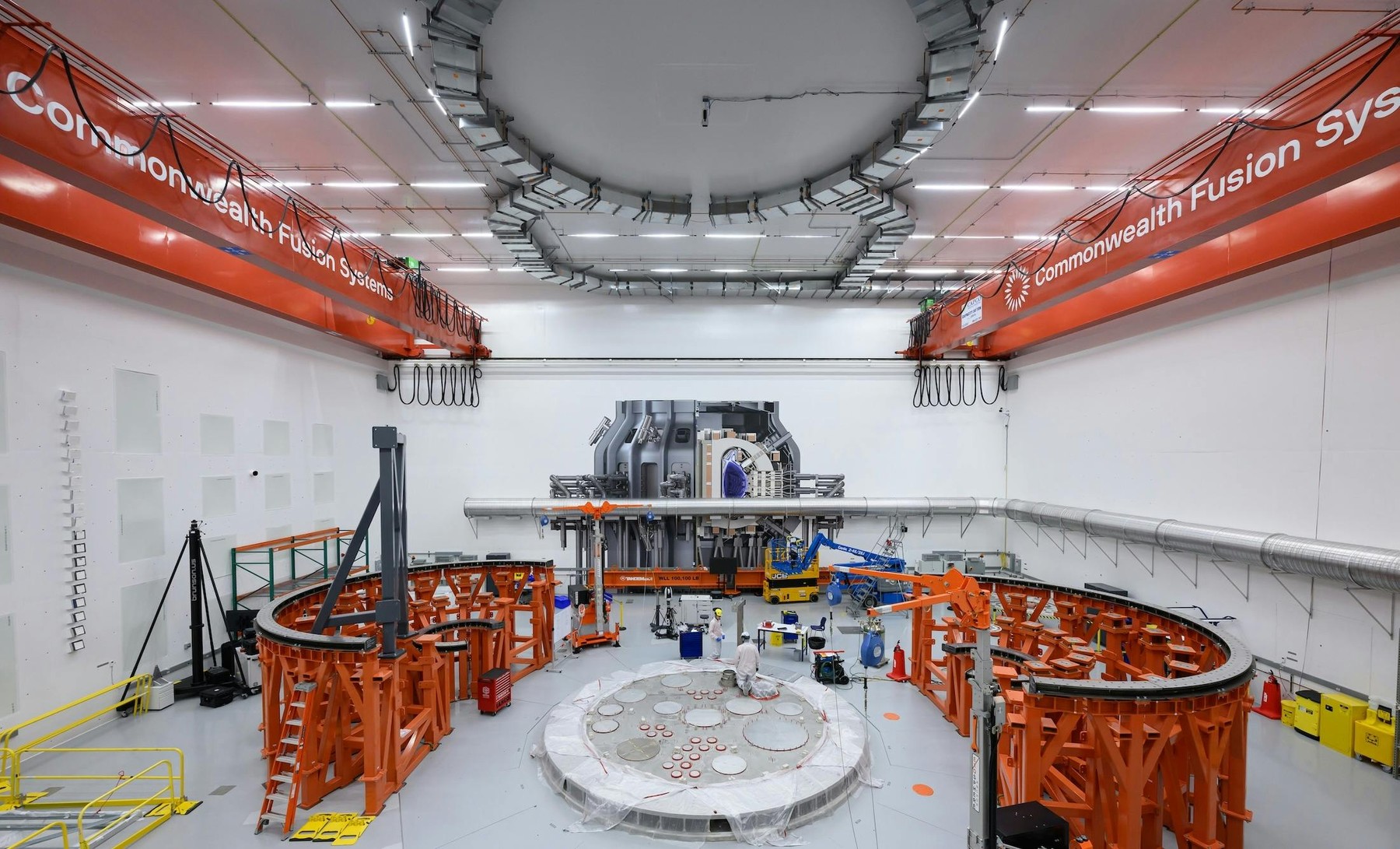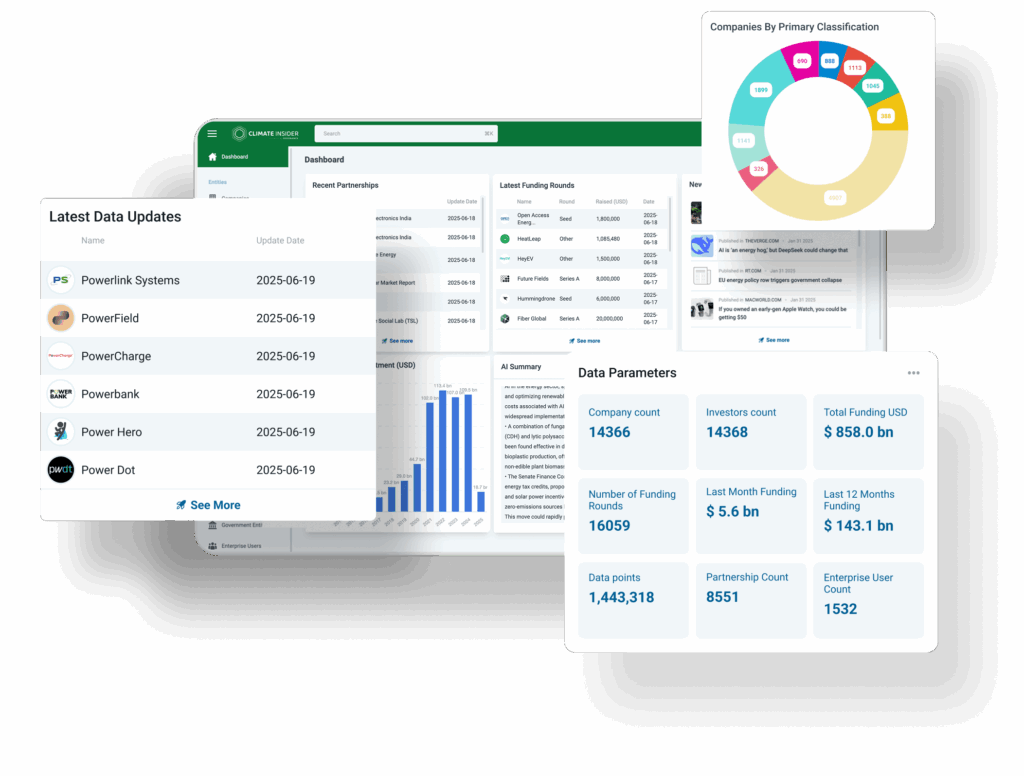Insider Brief
- Small modular reactors (SMRs) are factory-built nuclear fission reactors designed for scalable deployment, offering lower costs, enhanced safety, and flexibility compared to traditional nuclear plants.
- SMRs, such as Holtec’s SMR-300, use passive safety systems, underground containment, and modular construction to improve security, efficiency, and adaptability to different locations.
- While SMRs are promoted as a stable, low-carbon energy source, challenges remain in regulatory approval, initial costs, and competition with renewables and battery storage.
- Image: The U.S. Department of Energy’s Idaho National Laboratory
Small modular reactors (SMRs) are compact nuclear fission reactors designed for factory assembly and scalable deployment. Unlike traditional nuclear plants, which are massive and costly to build, SMRs are built in modules, allowing for lower upfront investment and faster construction.
Advocates say the technology could make nuclear energy more flexible and affordable while maintaining safety. Critics charge these devices still produce waste and are not completely safe.
The U.S. Department of Energy’s Idaho National Laboratory (INL) describes SMRs as a next-generation nuclear option with built-in safety mechanisms and modular configurations that can be tailored to local energy needs.

Essentially, INL points out, like any fission reactor, an SMR uses energy from a controlled nuclear chain reaction to create steam that powers a turbine to produce electricity.
SMRs come in multiple shapes and sizes, according to INL: “Different designs can have different end uses such as power generation, process heat supply or desalination. Small modular reactors also can vary in size from a dozen megawatts to hundreds of megawatts per module. Modules can be added or taken offline to match electricity demand, giving the plants immense flexibility. The modules can also be individually refueled so that an SMR plant is never fully offline.”
SMRs offer flexibility that large reactors simply can’t, according to INL materials. The devices can be sited in places that aren’t feasible for full-scale nuclear plants and can be added incrementally as energy demand grows.
Why SMRs Are Different
Traditional nuclear reactors operate on a massive scale, often exceeding 1,000 megawatts (MW) per unit and requiring billions of dollars in investment. In contrast, SMRs are designed to produce anywhere from 10 to 300 MW per module. The smaller scale allows for factory-built components that can be shipped and assembled on-site, reducing costs and construction delays.
The modular approach allows operators to adjust capacity as needed. An SMR plant can begin with just one or two modules and expand over time. This feature makes them particularly attractive for regions with growing energy needs or weak grid infrastructure.
SMRs also take up far less space than conventional nuclear plants. According to INL, a 920-MW SMR plant could fit within 35 acres, compared to the 500 acres needed for a traditional nuclear facility of similar output.

A Case Study: Holtec’s SMR-300
One real-world SMR design is Holtec’s SMR-300, a 300-MW pressurized water reactor (PWR) intended for flexible deployment. Holtec plans to install the first SMR-300 units at the Palisades Nuclear Plant in Michigan by the 2030s. The installation is covered in the Detroit Free Press and discussed in The Climate Insider here.
Unlike older nuclear plants that rely on extensive active safety systems, the SMR-300 features passive cooling mechanisms, reducing the risk of overheating.
“The reactor core is situated deep underground, protected by a steel and concrete containment enclosure,” Holtec materials state. This underground design enhances security by making the reactor less vulnerable to natural disasters or attacks.
Holtec also emphasizes operational resilience. The SMR-300 can start without outside power and run independently from local electrical grids, according to company documents. This feature could make SMRs viable in remote or disaster-prone regions where reliable energy is critical.
Additionally, the reactor can operate in water-scarce areas. Unlike traditional nuclear plants that require large water sources for cooling, Holtec’s design allows for air-cooled condensers, making it viable in arid environments.
Safety and Security
A key selling point of SMRs is enhanced safety. Many designs use passive safety systems, meaning they rely on physics rather than human intervention or mechanical systems to prevent meltdowns.
Holtec’s SMR-300, for example, is described as “walk-away safe,” meaning it requires no operator action to maintain safe conditions during emergencies. It also features an underground spent fuel storage system, reducing risks associated with long-term waste management.
Market Potential and Challenges
SMRs are often positioned as a bridge between fossil fuels and large-scale renewable energy. Because they provide stable, around-the-clock electricity, they can complement wind and solar energy, which are dependent on weather conditions.
The U.S. government has expressed strong interest in SMRs as part of its push for carbon-free energy. The Department of Energy has funded multiple projects, and the Nuclear Regulatory Commission has begun approving SMR designs for potential deployment.
However, challenges remain. While SMRs are designed to be cost-effective, the nuclear industry has historically struggled with high costs and regulatory hurdles. The first SMR plants will require significant investment, and their economic viability remains unproven at scale. Critics also question whether SMRs can compete with the falling costs of renewables and battery storage.
What is The Future of SMRs
Holtec’s SMR-300 is one of several SMR designs under development, and its deployment will be a key test for the industry. If SMRs deliver on their promise of affordability, flexibility, and safety, they could reshape nuclear energy’s role in the global power mix.







